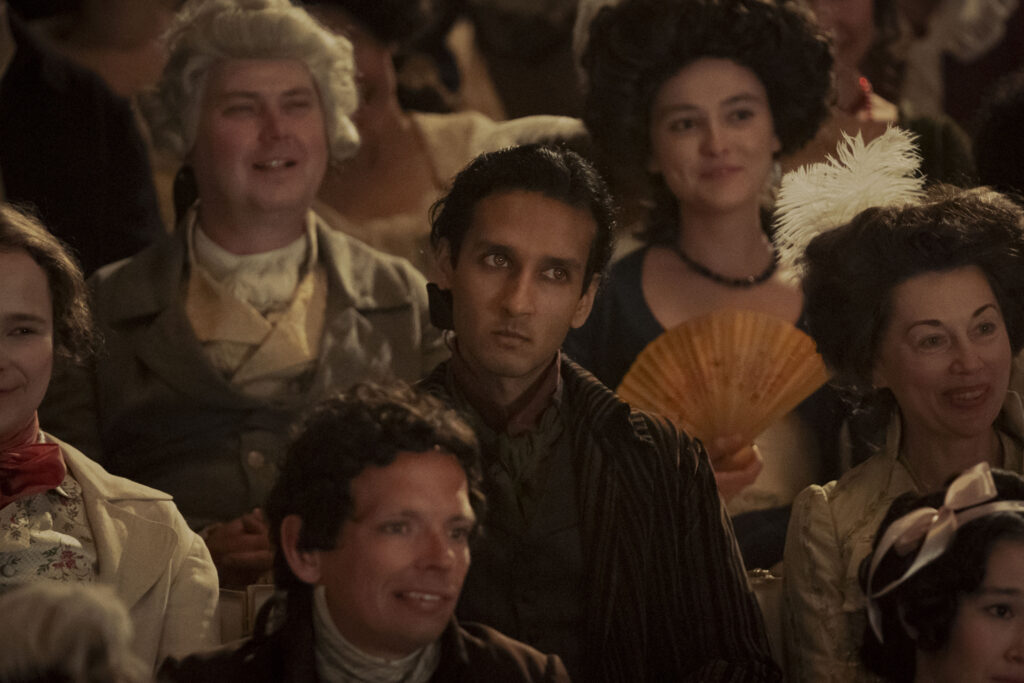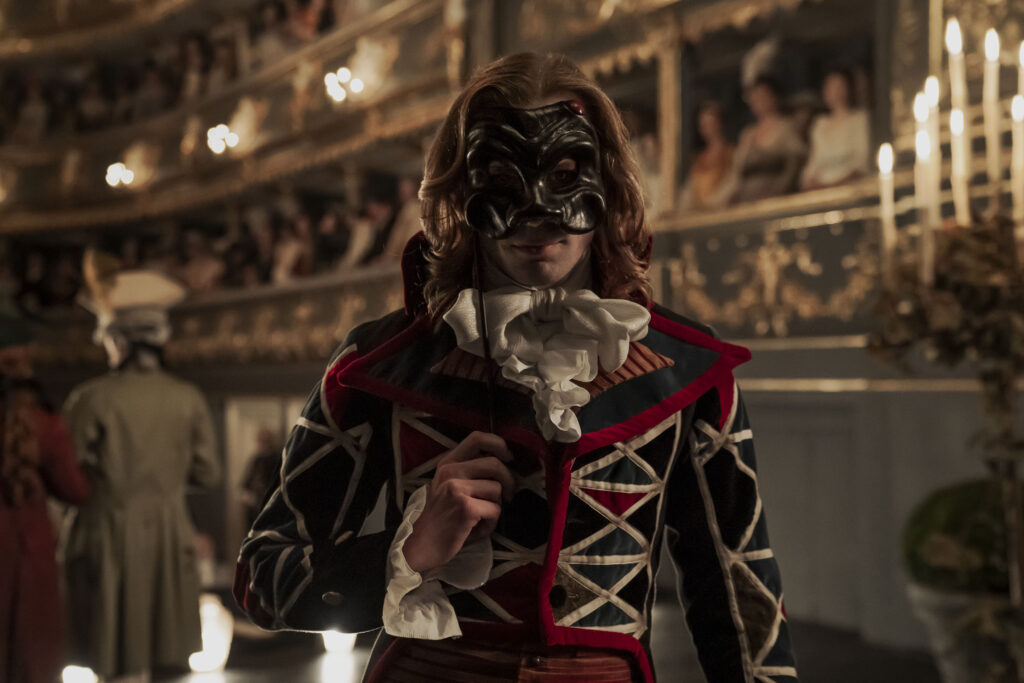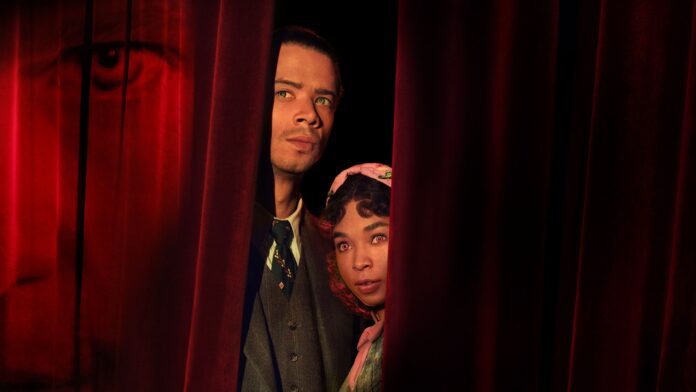This article contains spoilers for season two of AMC’s Interview with the Vampire.
With the recent release of the season two finale of AMC’s Interview with the Vampire, this chapter in the life of Louis de Pointe du Lac (Jacob Anderson) is finally closed. In a story that’s spanned over 100 years, Louis has finally accepted his vampiric nature and the two great losses of his life, his brother Paul (Steven G. Norfleet) and vampiric daughter Claudia (played by Delainey Hayles in season two and Bailey Bass in season one). But the show has also had its eyes ahead, laying the groundwork for future seasons.

Having concluded the story laid out in Anne Rice’s original 1976 novel, there has been much speculation among fans if season three would be an adaptation of Rice’s second novel The Vampire Lestat. In this sequel book, Lestat (who in the show is played by Sam Reid) awakens from a years long hibernation to discover his former lover Louis is the subject of the tell-all book titled ‘Interview with the Vampire’. His response? To write his own autobiography and become a celebrity in his own right—a Vampire Rockstar. And fans didn’t have to wait long to discover season three’s focus. During San Diego Comic Con, AMC released a teaser and debut single confirming they’re going full vampire rockstar.
With rockstar Lestat confirmed and in the works, let’s look back at how the show has been building towards this development.
After (seemingly) murdering Lestat and escaping New Orleans for Europe in the season one finale, Louis and Claudia arrive in Paris in search of other vampires. They find them in Armand (Assad Zaman) and his coven of vampires who run the Théâtre des Vampires. As in Rice’s books, the Théâtre des Vampires has one very special type of show: an elaborate performance that accumulates in them killing and eating their victims live on stage under the ruse that the murder is part of the show.

In the 1994 film adaptation, minimal time is spent with the theatre coven (around a quarter of the two hour runtime). Outside of an introductory show, we don’t return to the stage so the coven’s theatrical murders appear to be nothing more than an elaborate and exhibitionist way to kill. The TV show takes a different approach. Season two of IWTV expands the Théâtre des Vampires arc significantly, with the theatre serving as one of the season’s main locations and the source of most of the action. IWTV has always focused on memory and narrative, and particularly about the stories we tell ourselves and others, but this increased focus on the Théâtre des Vampires allows a new theme to emerge—vampire as performance.
As the house lights fall, the theatre’s leading man Santiago (Ben Daniels) takes the stage. Santiago is not just one of the players but also something of an MC. Clad in a stereotypical vampire cape, he dons a pulley rope and flies across the audience while pretending to be hoisted. As he flies he monologues about the difference between vampire and human nature. He is a vampire pretending to be a man pretending to be a vampire. Claudia is enamoured. Though her book counterpart despised the theatre vampires, and her 1994 adaption is mildly indifferent (“How avant-garde”, Kirsten Dunst smirks). Hayles’ Claudia is desperate to join them which allows the theatre to take a more central role in the story. After a lifetime of disappointment, Claudia is just happy to meet vampires that seem to enjoy embracing their nature. These vampires can be themselves loudly and proudly, by pretending to be exactly what they are. But who could have innovated such an idea? The Vampire Lestat, of course.

In episode three, Armand brings us into a flashback of the theatre’s origin. Pulling from portions of Rice’s The Vampire Lestat, Armand tells us about his original coven, the ‘children of darkness’ who lurked in the shadows. When confronted with the coven, Lestat simply bursts in with a giant crucifix, and triggers an existential crisis. Having ruined his satanic cult, Lestat invites Armand to the theatre and pitches him an idea. Isn’t the stage a perfect place to hide in plain sight? What remains of the coven is onboard and so is Armand. The Théâtre des Vampires is born. With these flashbacks, IWTV establishes Lestat as the innovator of this strange vampiric performance art and emphasizes the importance of the stage to Lestat. This episode also works to introduce the tension between living life in the shadows vs life in the spotlight. While Armand’s vampires chain themselves to the shadows in a misguided sense of religious duty, Lestat has little interest in god or the devil—just his adoring audience. This contextualizes Lestat as unique among the vampires of his time. Lestat revels in being a vampire, and does so incredibly publicly.
It’s important for IWTV to seed these themes of performance and stage, ahead of its third season. One of the key jobs of an adaptation is to make a story accessible to a wider audience. And as some of the meaner reviews for 2002’s Queen of the Damned can attest, the concept of a vampire rockstar can be a bit of a hard sell. “It sounds like a bad Saturday Night Live skit,” noted the composer in a recent Vulture retrospective. But in AMC’s ITWV, a vampire rockstar is simply the next step in a narrative that plays out on the stage. After all, so many of season two’s key moments are rooted in the environment of the theater: for example, Claudia’s induction to the coven, Claudia’s Baby Lulu performance, the coven forming their duplicitous plot during rehearsals. Even the famous trial of Claudia, Madeline and Louis takes place on stage and in front of a live audience, complete with judges’ costume and cartoon reenactments. Though it’s not the vampires that decide their fate but the vote of the human audience. It seems appropriate that the trial is the first time in season two we see the real Lestat, when he’s about to take the stage as the star witness.

All storytelling is a performance, even if it’s just to an audience of one. This is a theme present in Rice’s books where their focus is vampires taking their stories public. But reading is inherently a solitary experience. The format of television allows for the heightening of these themes. By centering the theatre, ITWV solidifies the performative nature of its stories, and acknowledges a wider audience the narrative is being performed to.
At the end of season two, Louis’ story is published, exposing his life and vampire secrets to the world. Louis has taken his story to the global stage, so of course Lestat must follow. But theatre is hardly the biggest platform anymore, so why not give music a try? Whether Lestat’s career move is more motivated by protecting Louis via distraction or because he’s jealous of the attention (likely a bit of both) remains to be seen. But in AMC’s Interview with the Vampire the world’s a stage and it’s ready for its next performer.
You can stream season one and two of Interview with the Vampire on BBC iPlayer now.
Words by Louise Eve Leigh
Support The Indiependent
We’re trying to raise £200 a month to help cover our operational costs. This includes our ‘Writer of the Month’ awards, where we recognise the amazing work produced by our contributor team. If you’ve enjoyed reading our site, we’d really appreciate it if you could donate to The Indiependent. Whether you can give £1 or £10, you’d be making a huge difference to our small team.
